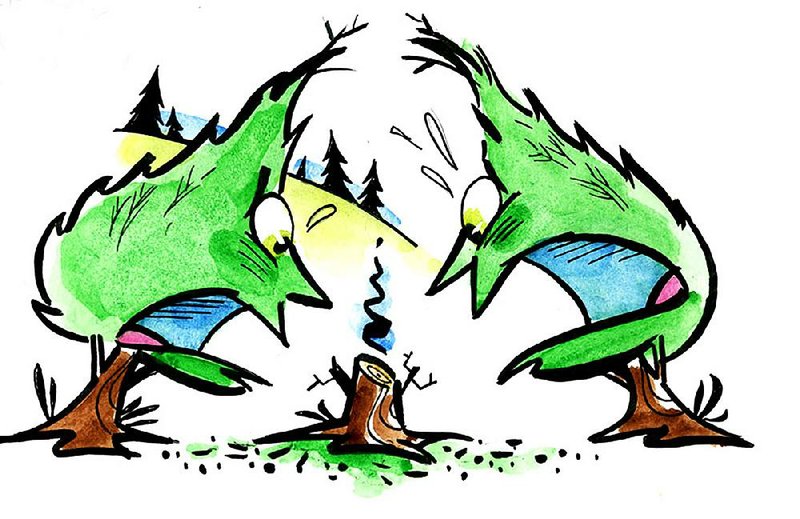Q Fourteen years ago we planted Leyland cypress across our back lawn. They grew like wildfire to at least 30 feet tall, but the power company has made several destructive cuts on them and now they need to be replaced. So we are working with Bemis Tree about replacing them. We are in a dilemma. We have planted a "Mary Nell" holly in the corner where we had had a 40-foot spruce until it was destroyed, and we love the dark green of the holly. Now we are trying to decide whether to replace the Leyland with the holly or "Emerald Green" arborvitae. Do you have any suggestions?
A If there is room to plant a variety, diversity is always a good thing. I like the "Mary Nell" and "Nelly Stevens" hollies along with "Luster Leaf" and others. The arborvitae is a different texture and would complement the hollies and "Little Gem" magnolias; or one of the other small-leafed varieties would be good. Many people planted rows of Leyland cypress that they are now replacing due to a stem canker disease.
Q The Oklahoma City Memorial Commission gave me a "shoot" from the American elm "Survival Tree" (which survived the 1995 bombing of the Alfred P. Murrah Federal Building that left 168 people dead). I rooted it, and it is now about 15 feet tall in my backyard with a base diameter of about 3 feet. It is growing straight up. When is a good time, age-wise and seasonal, to have it trimmed so it will grow to its proper shape and grow away from the house to decrease the danger of it falling on the house when fully grown? Also, do you recommend a particular style of tree trimmer? This tree is very special to me.
A First of all, how far away from your house is the tree planted? For a large tree, I suggest no closer than 15 to 20 feet from a house. You want to make sure there is room to allow for a good branching structure all the way around the tree so that it is not lopsided. When a tree is young is the ideal time to trim it to make sure it has a sound branching system at maturity. Often elm trees will have a fork at the top with two branches too close together. Choose one, prune the other out and then tip the ends of the branches. This should encourage more lateral branching. Each year, inspect your limbs and make sure they are healthy and growing well. Tipping the ends will encourage branching. With good training while young, the tree should be low-maintenance and healthy for life. Loppers or pole pruners work well.
Q I have heard that jade plants like to be root bound. Should I think of transplanting my thriving jade to a bigger pot? It spends the summer in our screened-in porch and the winter inside. It is doing well now so I don't want to repot if it is not necessary yet. I water once a week in the summer and once every two weeks in the winter.
A When plants become too root-bound it is hard to keep them watered, as the roots occupy most of the pot space. Since jade plants are relatively slow-growing, you could repot it once every two years. If you want it to grow larger, gradually increase the pot size with each transplant. If you want it to stay roughly the same size, take the root-bound plant out of the container, shake off the old soil, shave off some roots on all four sides and repot in the same container with fresh soil. I would not do so now. Plants often slow down their growth in the winter, and repotting would be too much of a shock. Repot when you move it back out to the screened porch next spring.
Q Our mature holly bushes have a bad case of powdery mildew. Can you please tell me how to treat it?
A Make sure what you have is powdery mildew and not a tea scale. I have seen quite a bit of scale on hollies this year, and the look can be similar. I have had several gardeners over the year treating for a fungus when in fact they had an insect. Take a picture of the problem and send it to me or your local county extension agent, or take a plant sample in to your local county agent. Correct identification is key in controlling any problem.
Janet B. Carson is a horticulture specialist for the University of Arkansas Cooperative Extension Service. Write to her at 2301 S. University Ave., Little Rock, Ark. 72204 or email her at
jcarson@arkansasonline.com
HomeStyle on 12/10/2016
